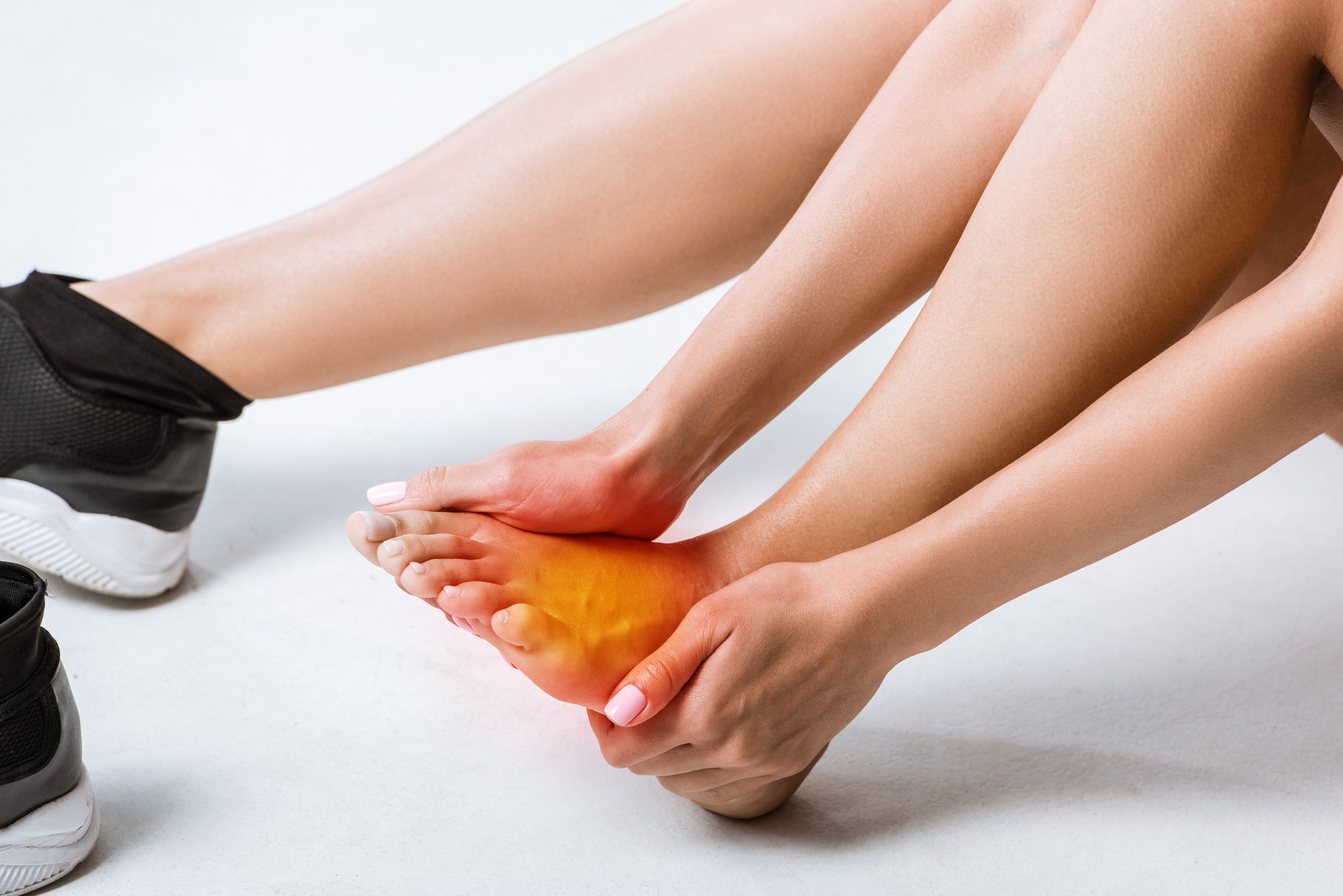Plantar Plate Rupture
If you suffer from pain or swelling please Schedule an appointment with one of our orthopedic specialists as soon as possible.
What Is Plantar Plate Rupture?
Plantar plate rupture, also termed metatarsophalangeal joint instability or “dropped metatarsal,” occurs when the plantar plate ligament in the foot tears or becomes disrupted. This thick ligament situated on the foot’s underside connects the metatarsal bones to the base of the toes.
Repetitive stress or trauma to the forefoot, commonly from activities like running, jumping, or pivoting, is the primary cause this condition. Additionally, structural abnormalities of the foot, such as a long second toe or excessive pressure on the forefoot due to conditions like bunions, can contribute to this condition.
Symptoms Of Plantar Plate Rupture
Plantar plate rupture manifests as pain and tenderness in the ball of the foot, especially near the affected toe(s), alongside swelling and inflammation. Patients may also feel instability or a sensation of the toe(s) “slipping” or “popping out” of place, hindering weight-bearing on the affected foot. Furthermore, it can result in a hammer toe deformity, causing the affected toe(s) to bend or curl downward, exacerbating discomfort and impeding mobility.
Healthcare professionals diagnose this condition through a comprehensive examination, comprising physical assessment, review of medical history, and potentially imaging tests like X-rays or magnetic resonance imaging (MRI). These measures evaluate the injury’s severity and exclude other potential causes.
Treatments For Plantar Plate Rupture
Treating plantar plate rupture typically involves a blend of conservative methods to alleviate pain, reduce inflammation, and foster healing. Key components include rest and immobilization, using supportive footwear or braces to stabilize the foot and avoiding activities that exacerbate the condition. Ice therapy aids in pain relief and reducing inflammation, while NSAIDs—either over-the-counter or prescribed—help manage discomfort. Physical therapy assumes a pivotal role, employing customized exercises and stretches to fortify muscles, enhance foot mechanics, and regain stability and mobility. Orthotic devices, like custom-made shoe inserts, provide supplementary support and relieve pressure on the affected area, while taping or strapping techniques stabilize the impacted toe(s). Shoe adjustments, such as opting for footwear with a wide toe box and adequate arch support, diminish forefoot pressure and encourage proper foot alignment.
Consult with a podiatrist or orthopedic specialist, for an accurate diagnosis and personalized treatment plan for plantar plate rupture. They will consider the severity of the injury, individual symptoms, and overall health to recommend the most appropriate interventions to manage the condition effectively and prevent long-term complications.


